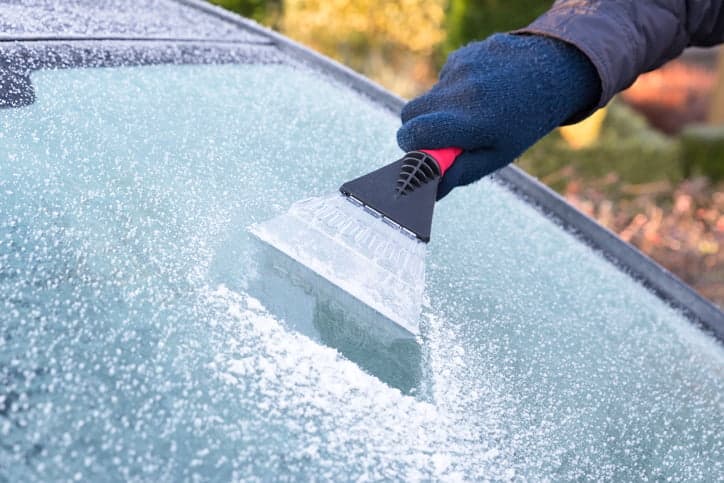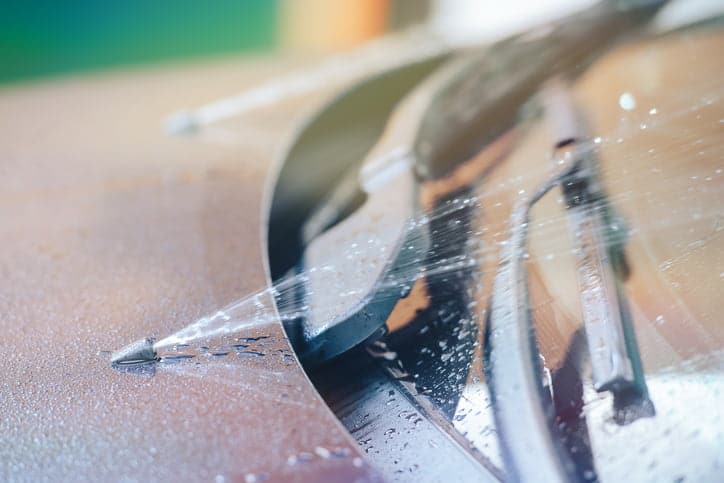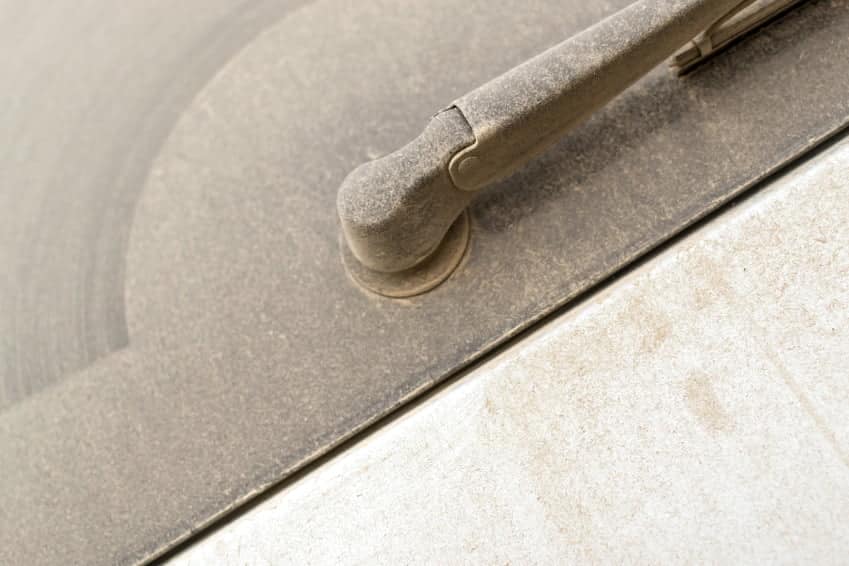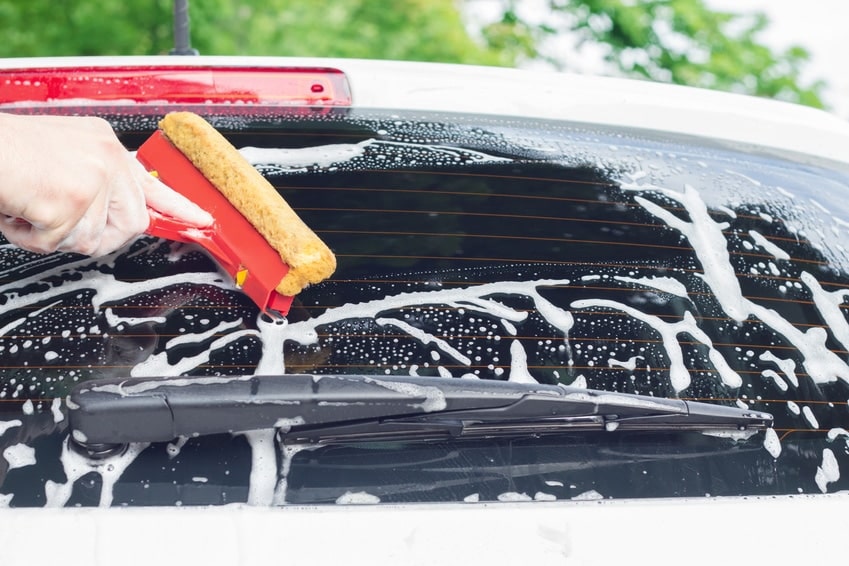The importance of screen wash cannot be understated. Whatever the weather, washer fluid lets you keep on driving no matter how tough the conditions get. Not only that, but keeping your windscreen clean is a legal requirement, so it’s vital you keep your screen wash topped up and ready for action.
And yet, like all things car related, there are a number of myths surrounding screen wash. So to prove, once and for all, just how important washer fluid is, here we bust five of the most glaring myths about screen wash, and offer some helpful tips and advice.
Quick Links
- The 5 Screen Wash Myths You Need to Know
- Why Using Screen Wash is Important
- How to Top Up a Screen Wash Reservoir
- How to Adjust Screen Wash Nozzles
The 5 Screen Wash Myths You Need to Know
Myth 1: You don’t really need screen wash in the summer
Winter might mean more rain, slush and road dirt on your windscreen, but summer offers up its own set of visibility problems. From dust to dead insects, your windscreen goes through a lot, whatever the season — so you should always make sure your car is filled with premium screen wash. After all, it’s the law.
Plus, summer means the arrival of a sneaky danger — sun dazzle. Dazzle occurs when the sun’s rays shine on dirt and grime on a car’s windscreen, limiting visibility for the driver. If you keep your windscreen free of dirt and smears, then you’ll get better visibility and won’t have any nasty sun related surprises.

Myth 2: Don’t use screen wash – water does the same thing
We understand that a lot of drivers like to save on the cost of motoring, and one such cost-cutting measure is to ditch screen wash in favour of plain old water. Sadly, water doesn’t deliver anywhere near the performance of high-quality screen wash, for two simple reasons.
The first reason is that it freezes, which doesn’t bode well on frosty winter mornings. If water freezes in the wash reservoir or jets, it could cause lasting damage when you try and spray the screen wash, and this will cost you money to repair.
The second reason is that water simply won’t remove tough dirt, stains and marks caused by dead insects and tree sap. Over time, this can lead to reduced visibility, and prolonged abrasion could even damage the windscreen.

Myth 3: You can use washing up liquid or other household cleaners
If you’re tempted to squirt a few drops of washing up liquid into your car’s screen wash reservoir, we wouldn’t recommend doing so. While household cleaners are great for cleaning up dirt and grime around the home, they’re not fit for use on cars, and contain harsh chemicals which can damage paintwork and other metallic surfaces. Not only that, but household cleaning products offer zero protection against freezing, leaving you without protection when the temperature drops.
Perhaps the most obvious reason to avoid household cleaners is the amount of foam they produce which, when applied to a windscreen, could lead to reduced visibility.

Myth 4: Ready-to-use is a rip off
One myth surrounding screen wash is the idea that ready-to-use products don’t offer good value for money. The great thing about ready-to-use screen wash is that it’s been pre-mixed by professionals, so you can always guarantee great performance and freeze protection.
It can also help you avoid wasting screen wash – if you mix it yourself you could make it too strong and end up needing to buy more, but on the other hand if you make it too weak it won’t have good enough cleaning abilities.

Myth 5: Antifreeze in screen wash is like coolant/antifreeze
Cars rely on two different antifreeze products — antifreeze in screen wash and coolant/antifreeze. Both serve different purposes, but some people get the two muddled up, or think they’re the same thing.
Because screen wash has a higher freezing point than coolant/antifreeze, adding it to your car’s engine could cause major problems come the winter, including serious damage to internal parts. On the other hand, accidentally adding coolant/antifreeze to the screen wash reservoir could damage your car’s paintwork, as well as potentially causing harmful effects on the environment — so don’t get the two mixed up.
Why Using Screen Wash is Important
Now that we’ve cleared things up and busted the myths of screen wash, it’s time to get serious and talk about why it’s so important. There are five very good reasons you should use high-quality screen wash, including:
- It’s a legal requirement – that’s right, you could receive a fixed penalty notice if the police pull you over and discover you have no screen wash, especially when there’s reason to believe that reduced visibility has caused you to drive dangerously.
- It will dramatically reduce sun dazzle – sun dazzle is dangerous and can easily cause accidents any time of the year. Making sure the washer reservoir is kept topped up will ensure you can keep the windscreen free from smears and streaks which cause dazzle.
- It will help keep your car in good condition – screen wash is specially developed for cars, so you know that it’s safe to use. If you use water or household cleaners, there’s a risk of damaging the paintwork over time, so we’d always recommend high-quality screen wash.
- It will prevent freezing – make sure you use a high-quality screen wash with a low freeze rating. That way, on cold nights, the water in the reservoir won’t freeze solid and cause damage.
- It’s the best way to remove streaks, bugs and dirt from the windscreen – car windscreens are exposed to all sorts out on the road, and water alone just isn’t able to cut through that dirt. Thanks to powerful cleaning agents, screen wash makes light work of most marks, streaks and stains, so you’re guaranteed excellent visibility.
How to Top Up a Screen Wash Reservoir
Filling your car with screen wash is just about the easiest job you can do beneath the bonnet. However, if you’re new to driving or just need a little refresher, here’s a quick recap of how to fill the screen wash reservoir:
- Get yourself some high-quality concentrated or ready-to-use screen wash. If using concentrated, make sure you use the correct ratio of water and screen wash for the season. You may also need a funnel to help with pouring depending on the type of bottle your chosen product comes in.
- Lift the bonnet and locate the screen wash reservoir cap; it’s typically blue with a windscreen icon on the top. Flip open the cap, hold the lid out of the way, and begin pouring.
- Fill until the reservoir is completely full. You may need to wait for some bubbles to subside before you continue pouring, depending on the product you’re using. Normally, the hose leading to the reservoir is semi-transparent, so you should have an idea of when it’s nearly full. And you’re done!
How to Adjust Screen Wash Nozzles
Noticed the screen wash doesn’t distribute evenly across the windscreen? Perhaps you’ve been flashed by a driver behind after accidentally spraying their car? In some cases, screen wash nozzles may need readjusting to make sure they’re properly aligned with the windscreen – which is a quick and easy job you can do yourself.
Follow the steps below to quickly and safely adjust screen wash nozzles.
- Take a needle and gently insert the point into the washer nozzles, without forcing. This not only gives you leverage to adjust the nozzle, but will also help clear any blockages which are affecting the spray pattern.
- With the needle inserted, carefully adjust the nozzle so that the opening is directed at the windscreen. Then, remove the needle and test the spray. If it’s still not properly aligned, you may need to repeat the process.
At Prestone, our high-quality screen washes are developed to work in all extremes, keeping your windscreen clean no matter what the conditions. To find out more, visit the Prestone website.
